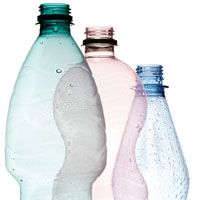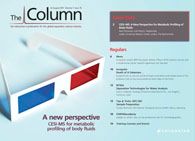Leeches in bottles
Concerns over the presence of bisphenol A (BPA) in reusable plastic bottles has led to changes in the food and beverages industry, and a move to materials that are supposed to be BPA-free. A recent study has investigated these materials; confirming those that offer a safe alternative.

Concerns over the presence of bisphenol A (BPA) in reusable plastic bottles has led to changes in the food and beverages industry, and a move to materials that are supposed to be BPA-free. A recent study has investigated these materials;1 confirming those that offer a safe alternative.
“BPA is an ever-present, high-volume industrial chemical that is an estrogen and an environmental endocrine disrupting chemical,” explained Scott Belcher, University of Cincinnati, US, who worked on the study. BPA has also been shown in experimental models to negatively impact the heart and reproductive system and enhance the growth of certain tumours. It is used in the production of consumer goods, polycarbonate plastics and epoxy resins that coat metallic food and beverage cans.
Reusable bottles, constructed from polycarbonate, co-polyester, stainless steel, aluminium with co-polyester lining or aluminium with epoxy resin lining, were tested for leaching. After cleaning and scrubbing the interiors, the bottles were rinsed six times with BPA-free water, two of those with HPLC-grade water, used to identify, quantify and purify the individual components of the water.
“Results once again showed that, at room temperature, detectable concentrations of BPA migrated from polycarbonate bottles.” said Belcher. In some cases aluminium bottles lined with epoxy-based resins were also found to release BPA.
“The results from this study show that when used according to manufacturers’ recommendations, reusable water bottles constructed from ‘BPA‑free’ alternative materials are suitable for consumption of beverages without the fear of BPA contamination,” said Belcher. “BPA does, however, migrate into water stored in polycarbonate plastic and metal bottles coated with epoxy-resins, especially when heated to high temperatures.”
1. J.E. Coopera, E.L. Kendiga and S.M. Belcher, Chemosphere (in press).
This story originally appeared in The Column. Click here to view that issue.
New TRC Facility Accelerates Innovation and Delivery
April 25th 2025We’ve expanded our capabilities with a state-of-the-art, 200,000 sq ft TRC facility in Toronto, completed in 2024 and staffed by over 100 PhD- and MSc-level scientists. This investment enables the development of more innovative compounds, a broader catalogue and custom offering, and streamlined operations for faster delivery. • Our extensive range of over 100,000 high-quality research chemicals—including APIs, metabolites, and impurities in both native and stable isotope-labelled forms—provides essential tools for uncovering molecular disease mechanisms and exploring new opportunities for therapeutic intervention.
New Guide: Characterising Impurity Standards – What Defines “Good Enough?”
April 25th 2025Impurity reference standards (IRSs) are essential for accurately identifying and quantifying impurities in pharmaceutical development and manufacturing. Yet, with limited regulatory guidance on how much characterisation is truly required for different applications, selecting the right standard can be challenging. To help, LGC has developed a new interactive multimedia guide, packed with expert insights to support your decision-making and give you greater confidence when choosing the right IRS for your specific needs.

.png&w=3840&q=75)

.png&w=3840&q=75)



.png&w=3840&q=75)



.png&w=3840&q=75)











